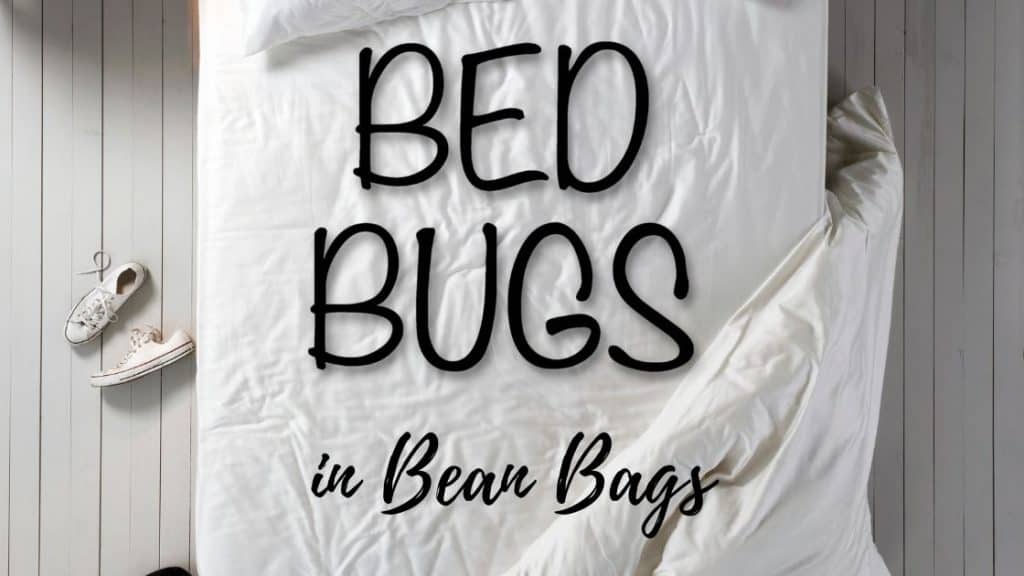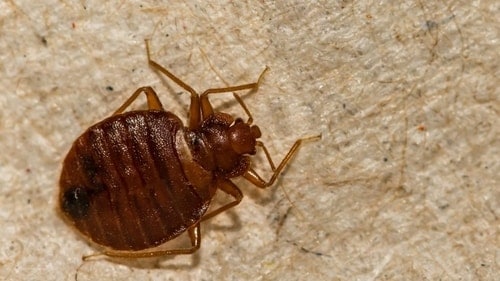Bed Bugs in Bean Bags – Guide for Get Rid of Them
Bed bugs are among the few negative features bean bags share with every other piece of furniture in a household.
Bean bags can get bed bugs just like any furniture which you sweat and breathe carbon dioxide on. Chances of getting bed bugs on your bean bag are higher if your visitors, pets, and kids who love to play outside and with pets also use the bean bag you have.
Bed bugs are nasty creatures you can find anywhere the humans live and have small but open spaces from the corners of bedclothes to cracks in the memory forms where they live as groups differ from a small family to a whole culture of members.
They also can grow their numbers from the former to the latter within a limit of a few weeks.
Let’s talk about what these creatures are before we discuss how to find them and destroy them or prevent them from ever coming into or onto your bean bag in the first place.

Table of Contents
- What are Bed Bugs?
- Where do Bed Bugs Live?
- A Bed Bug Bite
- Identifying a Bed Bug Invasion
- Get Rid of Bed Bugs
What are Bed Bugs?
Bed bugs are nasty bloodsuckers who have a bite that can turn into an itchy welt with the passing time. They suck the blood of both animals and humans to live on and have a brownish oval body that is as small as an apple seed.
But they become reddish after they drink blood, and their bodies start to swell bigger and bigger as they continue to fill them with blood.
An average female bed bug lays over a hundred eggs within its short lifetime, and these bundles of eggs are no bigger than a near-microscopic speck of dust. Nymphs who come out of these eggs have to shed their skin five times before they reach maturity, and they need to drink and fill themselves with blood before each of these shadings.
These fast-growing insects reach their full maturity within a short length of a month and lay eggs about three times within a year. They can’t fly yet move fast and could walk on walls and ceilings.
One good thing and the only relief when we discuss these nasty bugs is that they do not transmit any diseases according to our current knowledge.
Yet, they are considered to be among the top causes of allergies in an average human.

Where do Bed Bugs Live?
Bed bugs do not live in nests like most insects we use to have in our households, like termites and ants. But we can still find them in groups, and all they need is a tiny space as small as a width of a credit card to make a hose and settle in because they have flattened bodies, which help them be comfortable even in small and stuffed spaces.
The only thing is that their choice of homes will always be somewhere closer to your skin as they need to get there to have a bite and fill themselves with your blood in the night.
This is the reason why you can find them anywhere, from bed frames and box springs to the fine linings in your bean bags. Keep in mind if you found bed bugs in your bean bag, there is a good chance you might find some in your bed and sofas.
Having bed bugs in your house doesn’t mean that you have a dirty house or any such hygiene problems, as these bugs only depend on your blood and nothing else.
There are many ways these tiny nasties can enter your house and conquer it for themselves. They could come with old beds and couches you might bring to the home or even with a handkerchief or a hoody your son or daughter is wearing.
A Bed Bug Bite
Bed bugs usually suck from their victims in the dead of night while their victims are deep sleep. But them coming for your blood in the daytime while you are relaxing on the bean bag or having a small nap. They usually feed on you for sometimes between 3-10 minutes, and they use their long beak to pierce your skin and suck your blood.
They do all of these and walk away to their hiding spot even before you feel anything happened.
These bites could be anywhere on your skin, and you might not even feel any pain from them at the beginning. However, there is a high chance these bites would turn into itchy welts with the pass in time.
Most people don’t even recognize these bites as bed bugs and rule them out, thinking they are bites of mosquitoes or fleas.
However, these bite marks do not have a red spot in the middle, like flea bites, and they will only appear on exposed skin after spending some time on a bean bag or any other furniture with bed bugs, as said before.
The only good thing about their bites is that they don’t transmit any diseases according to the best of our knowledge about them. However, as said earlier, these bed bugs are nonsense to have in one’s house as many people show allergic reactions in their presence.
Now let’s see how we can identify whether we have a bed bug infestation in our house.

Identifying a Bed Bug Invasion
There is a high possibility that you have a bed bug infestation if you are with itchy areas on your body when you get up from your bean bag after a small nap or a few hours of relaxation. Bed bug infestation chances are even higher if you use an old bean bag or a second-hand bean bag to relax on.
Four signs could help you to identify such a problem if you already have one,
- Bloodstains on the bean bag cover.
- Dark and rusty spots of bed bug waste on the ben bag and the wall and floor nearby.
- Eggshells and shed skins of bed bugs on the bean bag in the places where they might hide.
- A musty odor.
Don’t hesitate to remove the cover of your bean bag and scrutinize it for any signs above if you suspect and bedbug infestation in your house. You should also check around the bean bag, including the places such as book racks, books in them and carpets and even electric outlets.
If you did find any evidence of an invasion, you should thoroughly examine other furniture, too, as bed bugs could have invaded those places, as said earlier.
The next logical step would be to get rid of these bed bugs.
Get Rid of Bed Bugs

The best way to deal with a bean bag infested with bed bugs is to throw away that bean bag and buy a new one. But that is not an option for most, so the next best thing is to get rid of bed bugs and deep clean the furniture they use to live in and their surroundings.
So, you should deep clean your bean bag well by removing your bean bag’s cover and washing it while cleaning its filters simultaneously. Always remember to refer to the tags and instructions that came with your bean bag to make sure you understand all you should do and avoid doing when cleaning your bean bag.
But your cleaning process shouldn’t stop with your bean bag as there is a good chance that the bed bugs would have invaded other places, from shoes or stuffed animals to curtains on doors and windows.
It is always better to wash them with hot water as well. But not all of the things that could have been a part of this invasion can’t be cleaned the same way you can wash your bean bag covers and curtains. You can put things like shoes or stuffed animals in the drier and run it at the highest for about half an hour to kill any bugs or eggs in them.
You could stop these infestations even before they have begun by regularly vacuuming your bean bag. But always remember to remove the vacuum cleaner bag and clean it immediately after you vacuum your bean bag.
You could also cover any cracks these bugs can hide with plaster and glue down any wallpapers that might be peeling and giving spaces these bed bugs can hide.
Keep in mind that these tiny creatures can live up to a year without feeding. They can reproduce and spread throughout your house at a much faster rate in comparison with many such animals we find in our household.
These two facts are also the reasons you should take action to stop a bed bug infestation the moment you spotted or felt such infestation is happening in your household.



